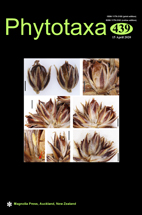Abstract
Amaranthus (Amaranthaceae) is a widespread genus that includes noxious weeds, economically important species for food, forage, medicinals and ornamentals. Three species of Amaranthus have been cultivated for their grain in the world, i.e. A. hypochondriacus, A. caudatus, and A. cruentus. It has been postulated that A. cruentus was domesticated from the probable wild progenitor A. hybridus, and that the domestication event occurred between southern Mexico and Guatemala, the region where the Mayan civilization flourished. Morphological variation in this grain amaranth and its putative wild progenitor has been poorly documented, even though this area is a possible center of domestication of A. cruentus. Samples of A. cruentus, A. hybridus, hybrids between these two species and aberrant morphotypes collected were studied morphologically using multivariate statistical methods on pistillate floral characters to (1) assess the diversity of grain amaranth A. cruentus and its postulated wild progenitor A. hybridus in the proposed domestication center of origin, (2) test the hypothesis that some hybrids and aberrant morphotypes found in the region can be morphologically differentiated from A. hybridus and A. cruentus based on statistical analyses, and (3) test and review the diagnostic characters traditionally used for assessing species circumscription. Our results showed high morphological diversity for these two species in the study region, indicating differentiation of both species, apparently based primarily on hybridization. Morphological variants on flower, bract, sepal, seed, and fruit characters were significant for confirming and circumscribing species.

